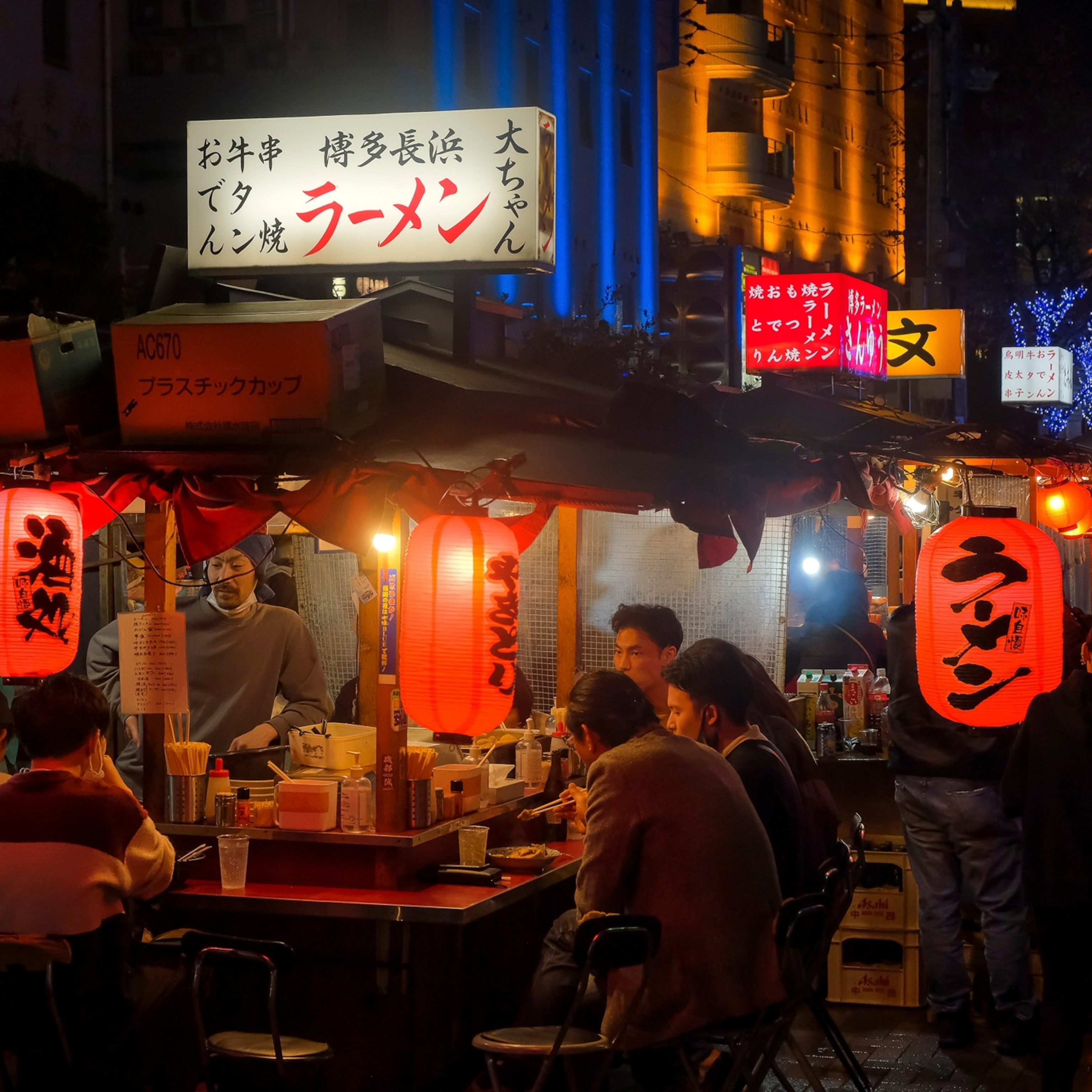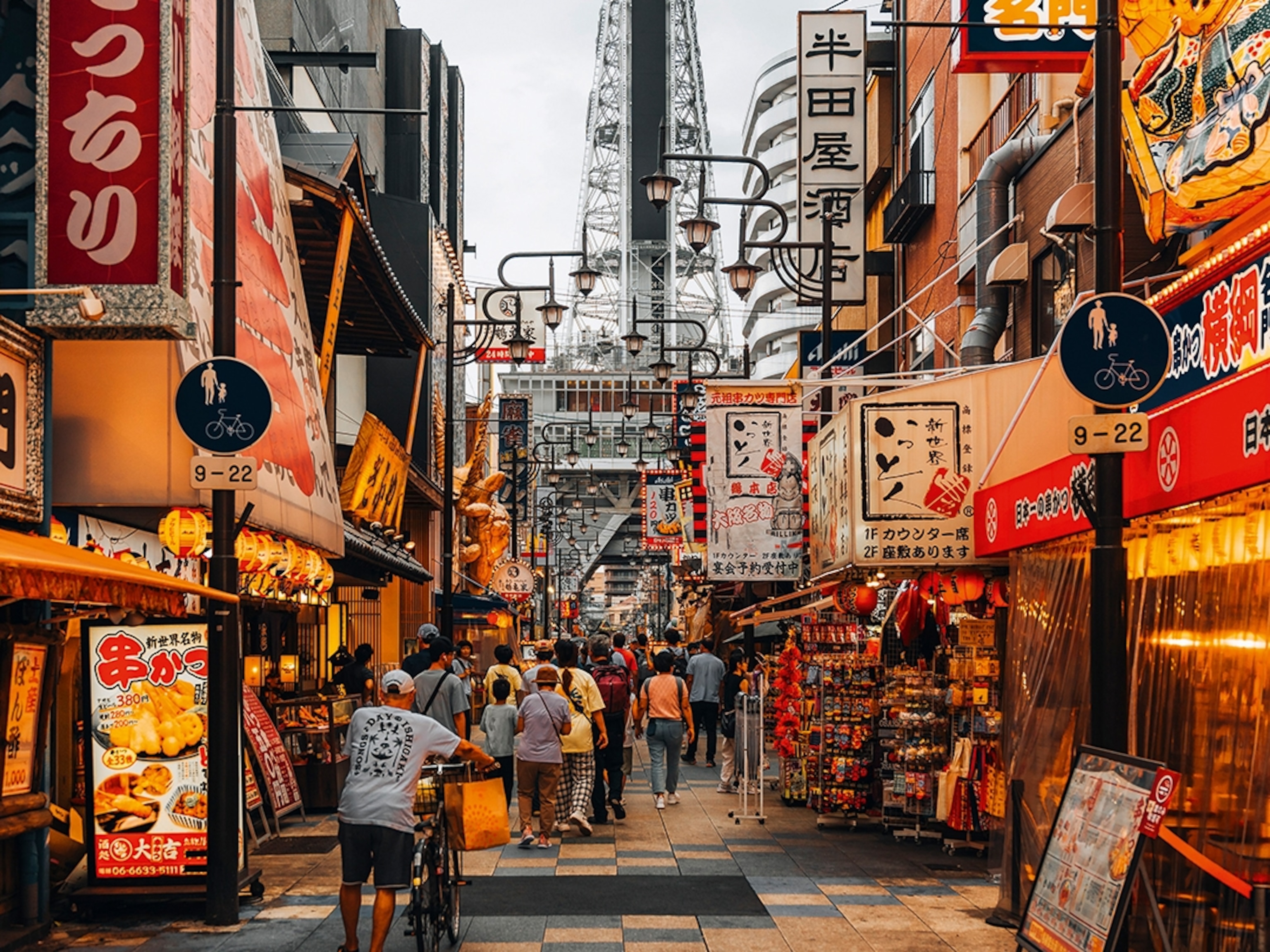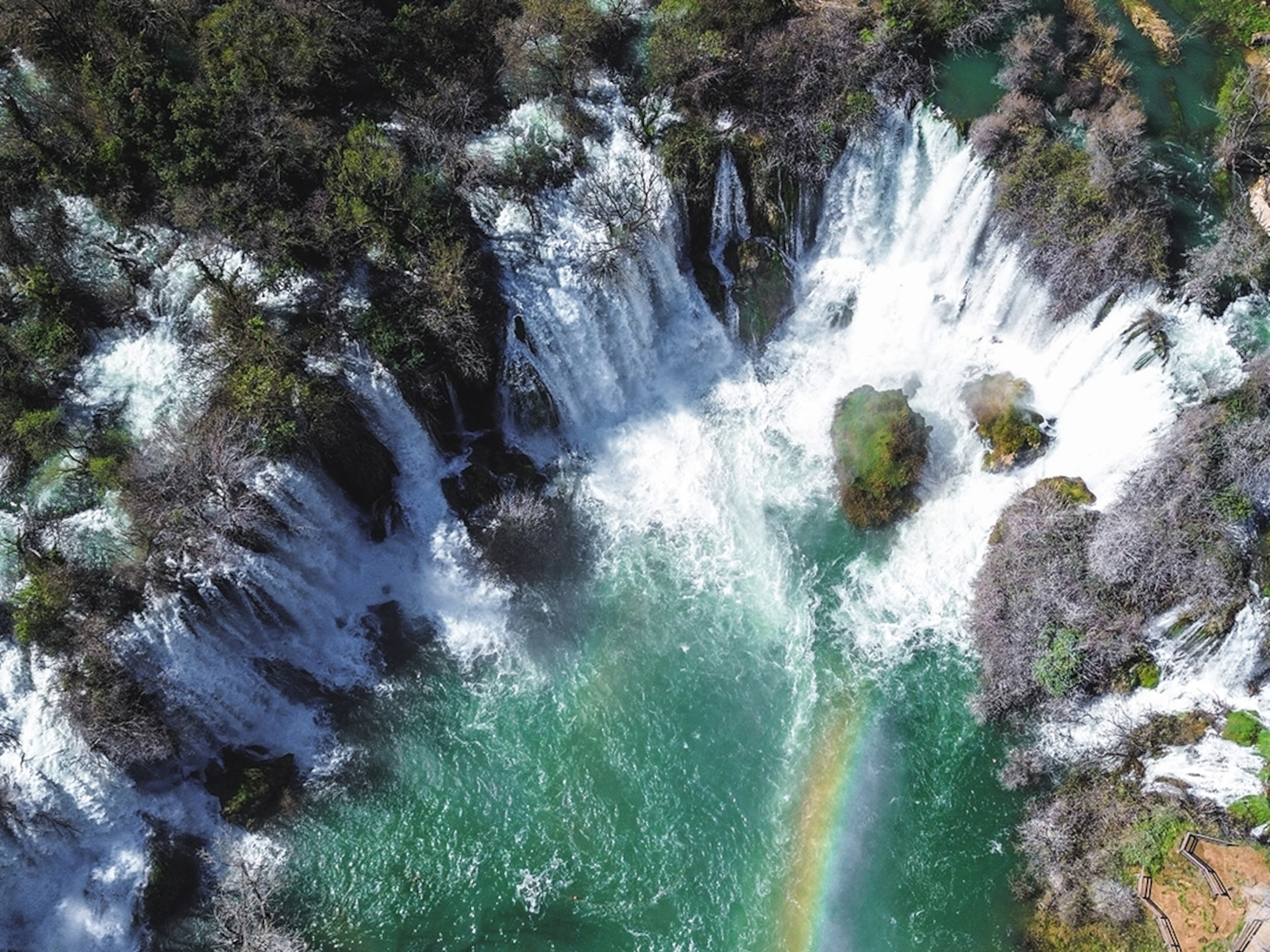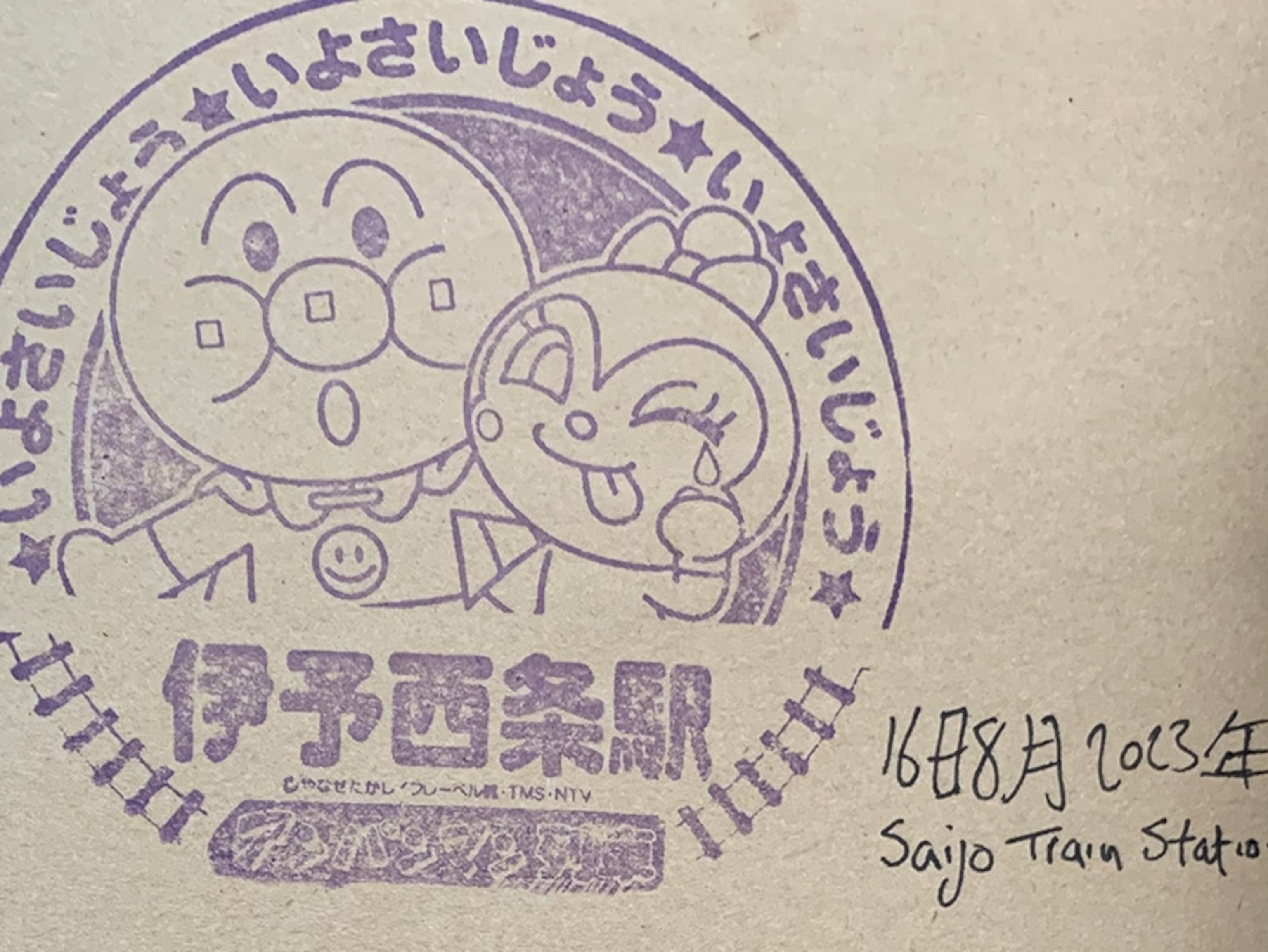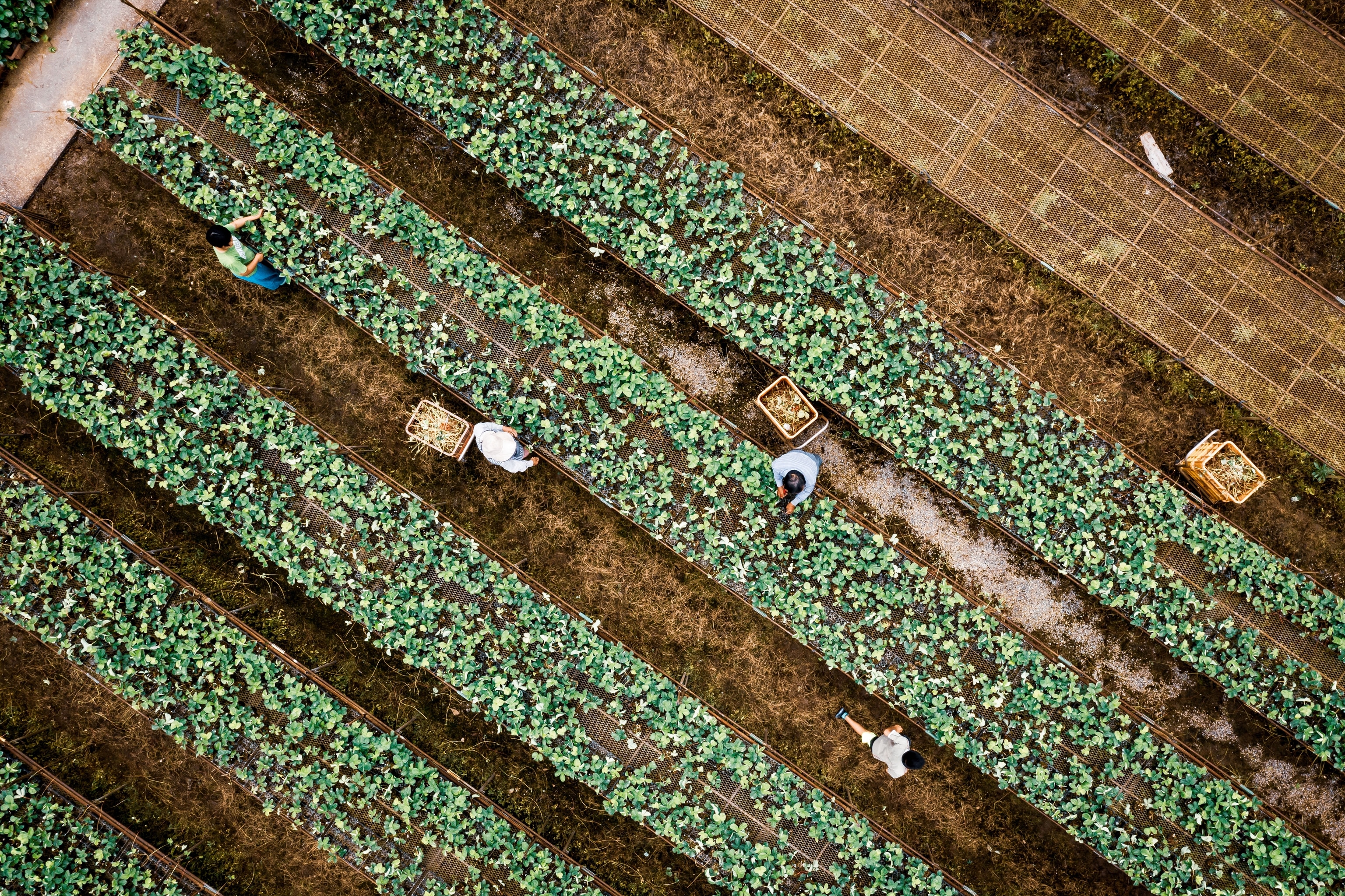
A rail adventure in Kyushu: onsen, homestays and sweet treats along Japan's Sugar Road
Kyushu’s trading heritage helped shape Japan. Today a new rail link from Tokyo, which takes in the historic Sugar Road, makes it easier to explore this lush island’s onsen villages, distinct cuisine and rural homestays.
The shoji screen door slides closed behind me. The room is sun-dappled — paper door and latticework walls letting light in while keeping prying eyes out. My shoes have been spirited away and the tatami floor is cool underfoot, its summer-hay scent hanging in the air. The rush grass used for the flooring, I’m told, comes from neighbouring Kumamoto Prefecture. The latticework carpentry forming the walls and arched ceilings are Okawa Kumiko style, originating in Fukuoka, which is where I currently find myself. Although not for much longer. At the blow of a whistle, this room will soon be on the move. The delicate confection of paper, wood and grass is, in fact, inside a train.
A white-gloved guard gives the signal, and we’re off. All aboard the 36+3, a luxury black-and-gold-trim train inaugurated by the Kyushu Railway Company in 2020. Operating on five routes around Kyushu, it’s the vision of Eiji Mitooka, the industrial designer responsible for a host of heritage trains that crisscross Japan’s third-largest island on sightseeing itineraries. Subtropical at its southern reaches, Kyushu is the southernmost of the country’s four main islands, almost closer to South Korea and Shanghai than Tokyo. Until 2004, when they became stops on the Shinkansen bullet train network, Kyushu’s ports and airports were better connected to Taiwan and mainland Asia than much of Japan. And it wasn’t until 2022 that the bullet train started operating in Kyushu’s far-western reaches.
The Shinkansen might offer a speedy connection to Tokyo, but Kyushu’s comprehensive local rail network demands you slow things down. And with fares in the 36+3’s standard-class carriages — almost as ornate as my first-class compartment — costing little more than a commuter train ticket, it’s an accessible luxury. First-class dining, though, is worth paying extra for. Lunch brings an extravagant bento box, courtesy of chef Shugo Nagaoka, from Michelin-starred Nagaoka restaurant in Fukuoka — slivers of Wagyu beef from the surrounding Saga Prefecture, floral scrolls of lotus and taro root, and a rainbow of sashimi, drawn from local waters. Framed in a bamboo box, it’s almost too beautiful to eat. Even the soy sauce is exquisitely presented in a tiny dish from the nearby town of Arita, the birthplace of Japanese porcelain.
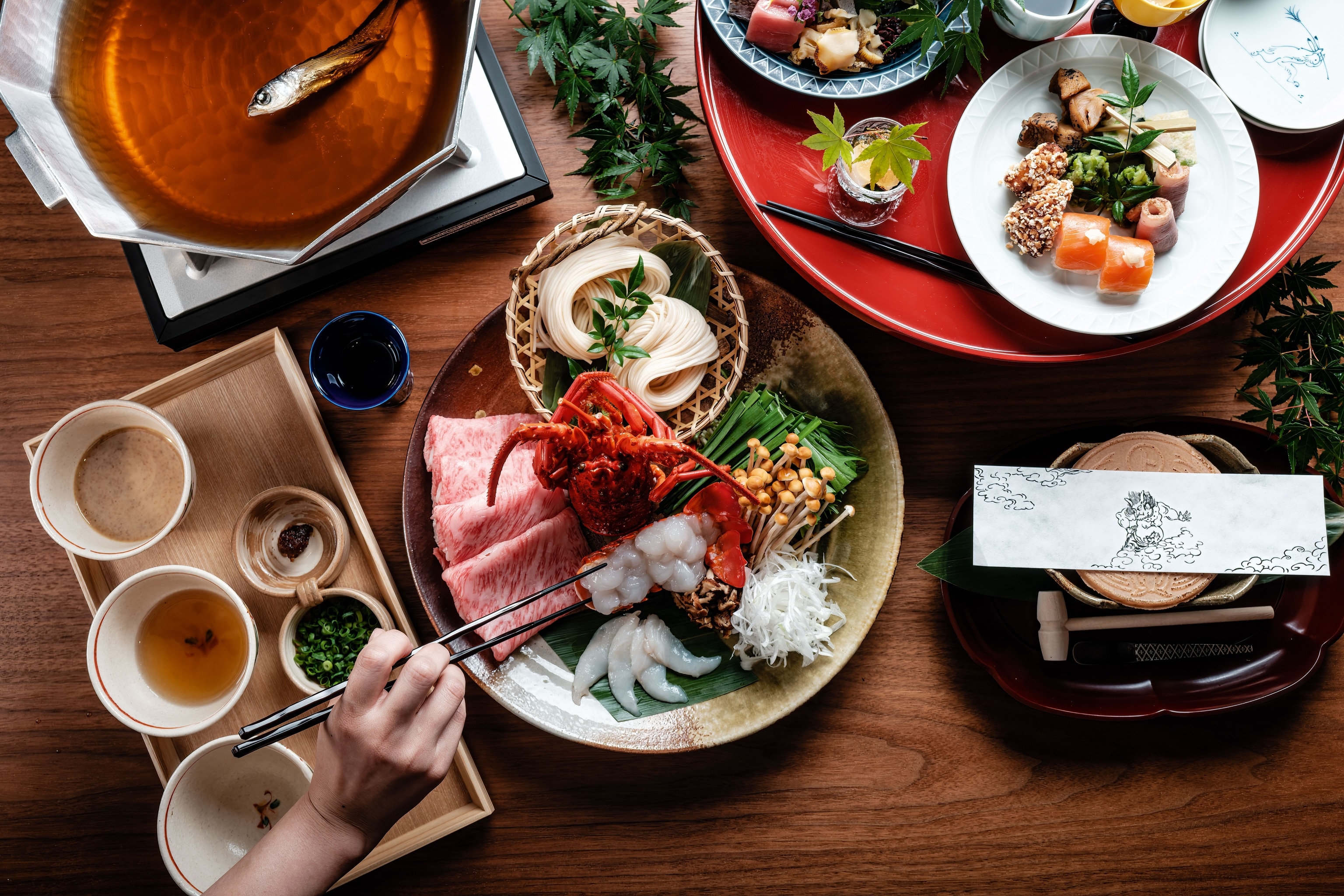
I pass up a glass of local sake in favour of some green tea — Kyushu is one of Japan’s main producers; it was first introduced to the country by a Chinese Buddhist monk passing through the island in the 12th century. But when the train makes a sightseeing stop at the town of Hizen Hamashuku, the fermented rice beverages are harder to resist. Along its Sake Brewery Street, preserved houses from the Edo era (1603 to 1867) — all whitewash, shoji doors and ornate, black-clay roof tiles — offer an atmospheric place for tastings.
Under cedar-beamed brewery ceilings, I try award-winning Daiginjo — the top grade of sake, made with the mineral-rich freshwater that flows from nearby Mount Taradake, mashed with the Saga Prefecture’s premium Yamada Nishiki rice.
There’s a gentle sweetness to the sake here — notably at venerable producer Minematsu Shuzo. “Everything is just that little bit sweeter in Kyushu,” says my guide, Kaoru ‘Kay-san’ Shibata, as we tour the brewery’s sake vats. “Have you tried our soy sauce yet? It’s darker and sweeter than the kind you get out east.”
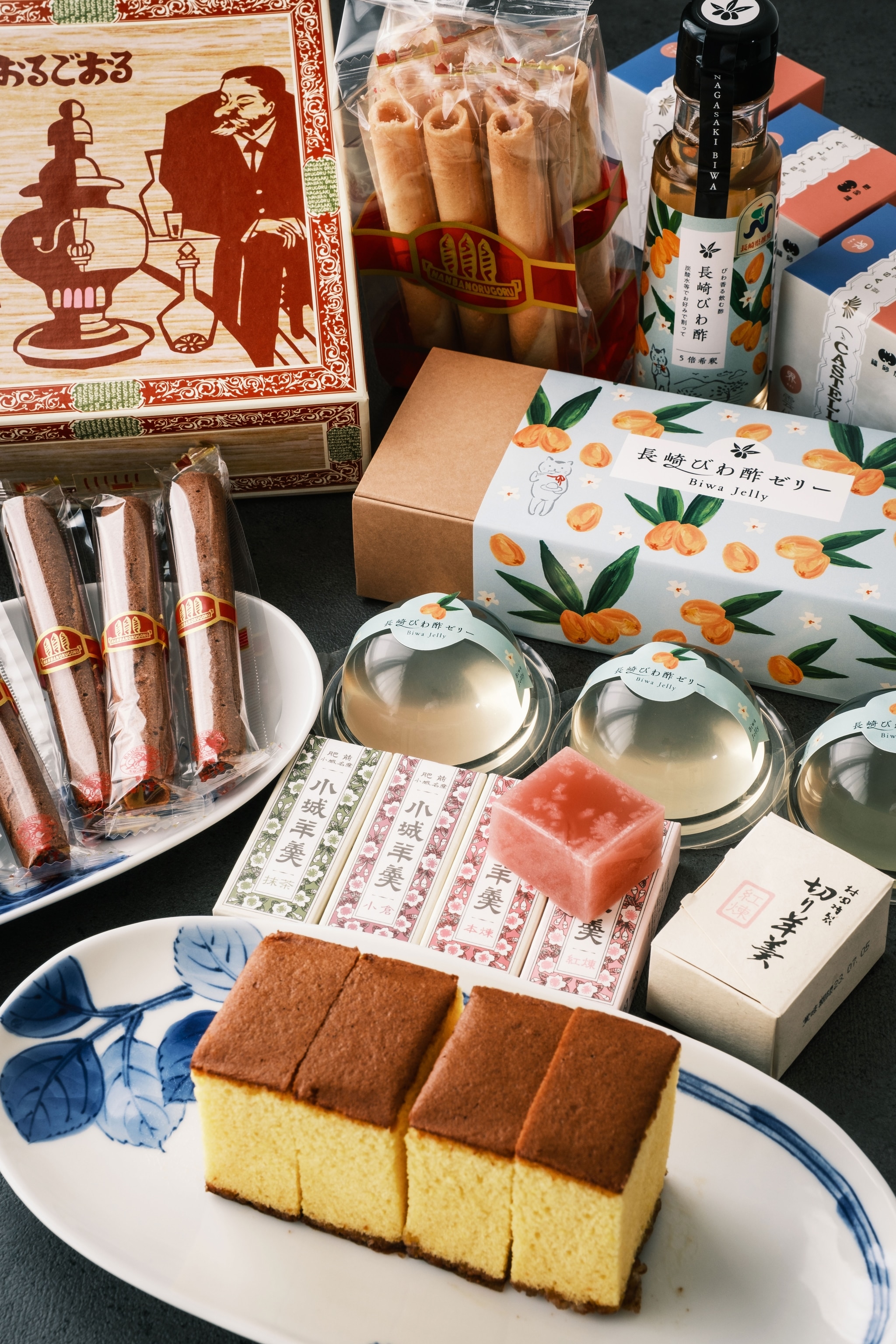
Sugar Road stories
Kyushu has a long history of sending sweet stuff east. In the early 16th century, the Portuguese introduced sugar to Japan via the island’s southwestern port of Nagasaki. Hizen Hamashuku is one of 25 staging-post towns along the Nagasaki Kaido, or Sugar Road, that winds 141 miles from Nagasaki through central Kyushu to the island’s northernmost city of Kitakyushu. As sugar found its way east to the rest of Japan, ryokan guesthouses, breweries and confectioners grew up along the route. “During the isolation era, Nagasaki was the one Japanese port open to foreign trade,” says Kay-san. “Kyushu was Japan’s only contact with the outside world — lots of things came and went along this route,” she says with a wry smile.
The ruling Tokugawa shogunate of the 17th century closed the nation’s borders to stem the rising tide of Christianity, but during the two centuries of isolation that followed, foreign customs, courtesans and all manner of sweet things still found passage along the Sugar Road. Had I stood here in the 1800s, my fellow travellers may well have included camels and elephants — exotic imports making their way to Edo (modern-day Tokyo) for the shoguns’ pleasure. In the nearby town of Ogi, I try yokan, a jelly-like sweet made with azuki bean paste in jewel-like ruby and jade colours. “If you go to any house in Kyushu, you’ll be offered one of these,” says Kay-san. “We’ve been eating them to this recipe for hundreds of years.”
My bed for the night also feels like it’s from a bygone era. I leave the train at the hot springs town of Takeo Onsen and head for the hills. Following the Oniki rice fields as they step up to meet the mountains, I find Oniwa homestay. With its wood and wattle-and-daub walls, it’s an almost sepia-tinged scene. My host, Yukono Takuma, greets me, dressed in an old-fashioned headscarf and pinafore. After we kick off our shoes, Takuma shows me into the kitchen, past a traditional Japanese kamado clay oven and into a lounge where screen doors open onto a stage-like deck jutting over the rice terraces. It’s a theatrical reveal that produces an open-mouthed “wow” from me that needs no translation for my non-English-speaking host.

“The house isn’t entirely old,” says Takuma, as we piece a conversation together using phone translation apps. “Parts of it are. We’ve added reclaimed pieces. It took two years to finish.” It’s a triumph of artful yet deeply rustic design. I sink into a basket chair on the deck, a misty pre-twilight bringing utter stillness to the terraces patchworked steeply down the narrow valley, densely forested mountains seeming to gather as they darken above. It’s a mesmerising dose of satoyama — the Japanese term for a transitional space between the man-made and the wild. The universal sound of kids being called for dinner finally brings me round.
This is an Airbnb that comes with a family meal at the irori, a sunken hearth around which families gather, cooking over wood embers in the centre, dining at the edge and sitting with legs tucked underneath. “You don’t see them much anymore,” says Takuma’s husband, Kawachi, who’s been stoking the irori for the past hour. “But it’s vital in winter — it’s so cold and humid up here.” We eat locally hunted wild boar and venison with garden veggies, and the two children, Kazuma and Nonoho, are easy company, eating and laughing at their pet goats bleating for dinner outside. Come bedtime, the family withdraw to their annex, leaving me a choice of futon or Western-style beds — with the promise of a kamado oven rice cookery lesson at breakfast.
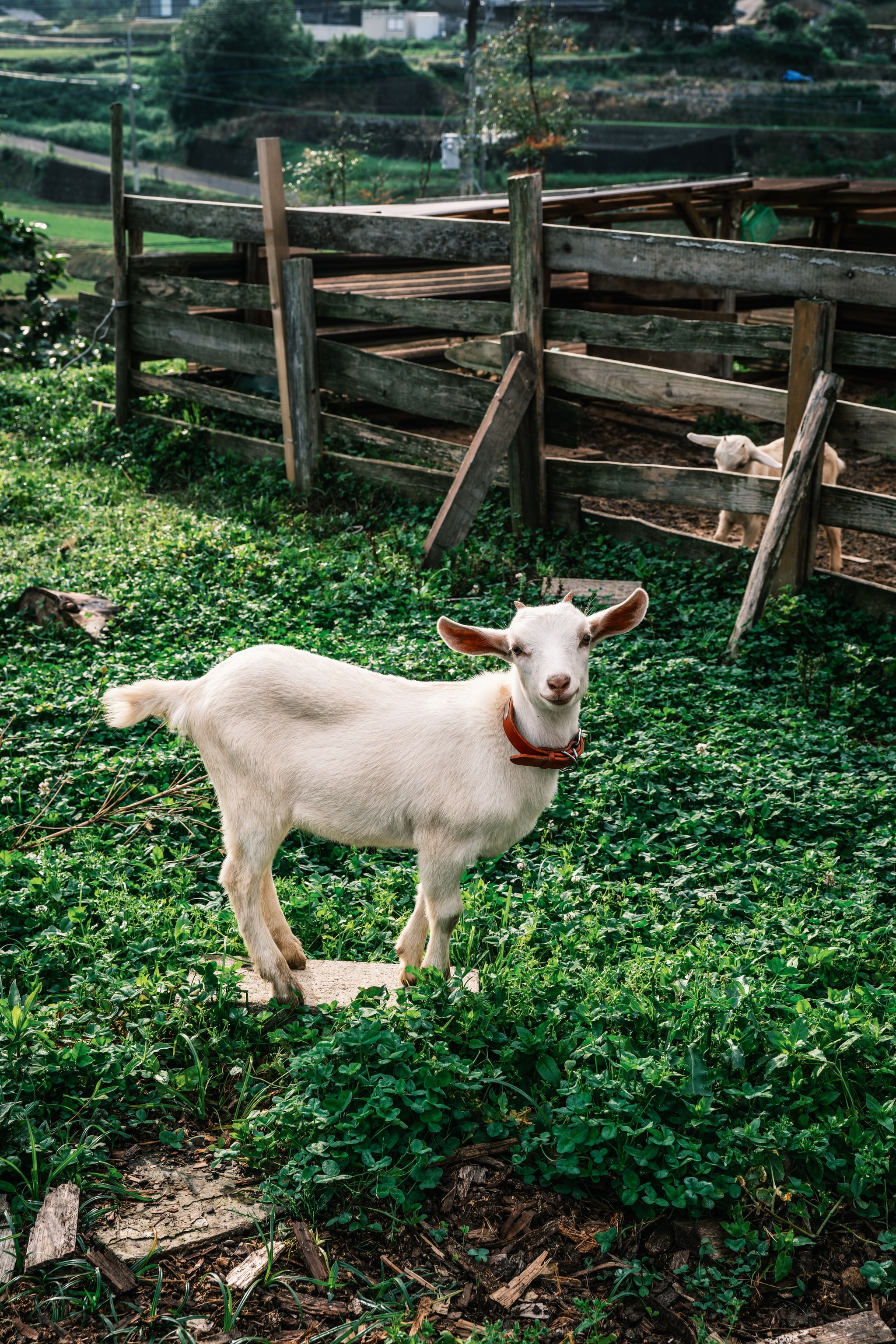
So much more than a place to sleep, nohakus (rural homestays or farm stays) have become a Kyushu accommodation staple over the past 20 years, offering cultural immersion and the chance to learn cookery, farming, local crafts and (at coastal fishing communities) aquaculture. Near the Sugar Road staging-post town of Ureshino, I stay at homestay Adonoan, where Hitomi Noda and her photographer husband, Naoyuki, share art skills with visitors in their garden studio. There’s also the chance, when he’s home, to take a pottery class with neighbour Kaneko Mitomu — a ceramist whose superlative examples of Saga region pottery have graced the British Museum. I tour the traditional, four-chamber kiln, marvelling at his work, which populates every surface and is even stacked out in the garden — bowls and pots sitting like sculptures under the loquat trees. Surrounded by rice fields and lit by fireflies once darkness descends, it’s another liminal satoyama landscape whose magical atmosphere stays with me long after I’ve departed.
To Hell and back
A vision of Hell, quite literally, greets me in Unzen. The hill town, centred around an active volcano in Kyushu’s Shimabara area, is home to the Unzen Jigoku sulphur springs (jigoku translates as ‘hell’). Steaming fumaroles punctuate the ground at every turn, an inferno softened by the lush mountains of surrounding Unzen-Amakusa National Park. Founded in 1934, Japan’s first national park was created as Unzen grew into a summer retreat from coastal humidity. Today, Unzen Jigoku’s iron-rich waters feed a modest number of spa hotels, including Kai Unzen, where guest-room balconies have private baths overlooking the broiling heart of the springs. Kai’s communal onsen — customarily male-female segregated — hosts multiple indoor-outdoor pools, including some with grey, unfiltered water, which, once the obligatory pre-onsen scrub and shower is done, I approach tentatively. “Don’t stay in too long,” cautions the attendant. “More than 10 minutes can be too harsh on the skin.”
Kyushu is home to Japan’s largest concentration of hot springs — testament to the fact onsen bathing is still very much woven into local culture. And this one is powerfully hot stuff. Once in a post-bath stupor, the onsen hotel custom of wearing house pyjamas to dinner, taken in private booths, seems entirely sensible. My meal of shippoku small plates and a shabu-shabu hot pot becomes a long, lazy indulgence. But the extravagant feast, all artfully presented on Saga ceramics, ultimately defeats me. The little castella sponge cake (a Sugar Road dessert of Portuguese origin) I find later in my room, left as a gift, has to wait.
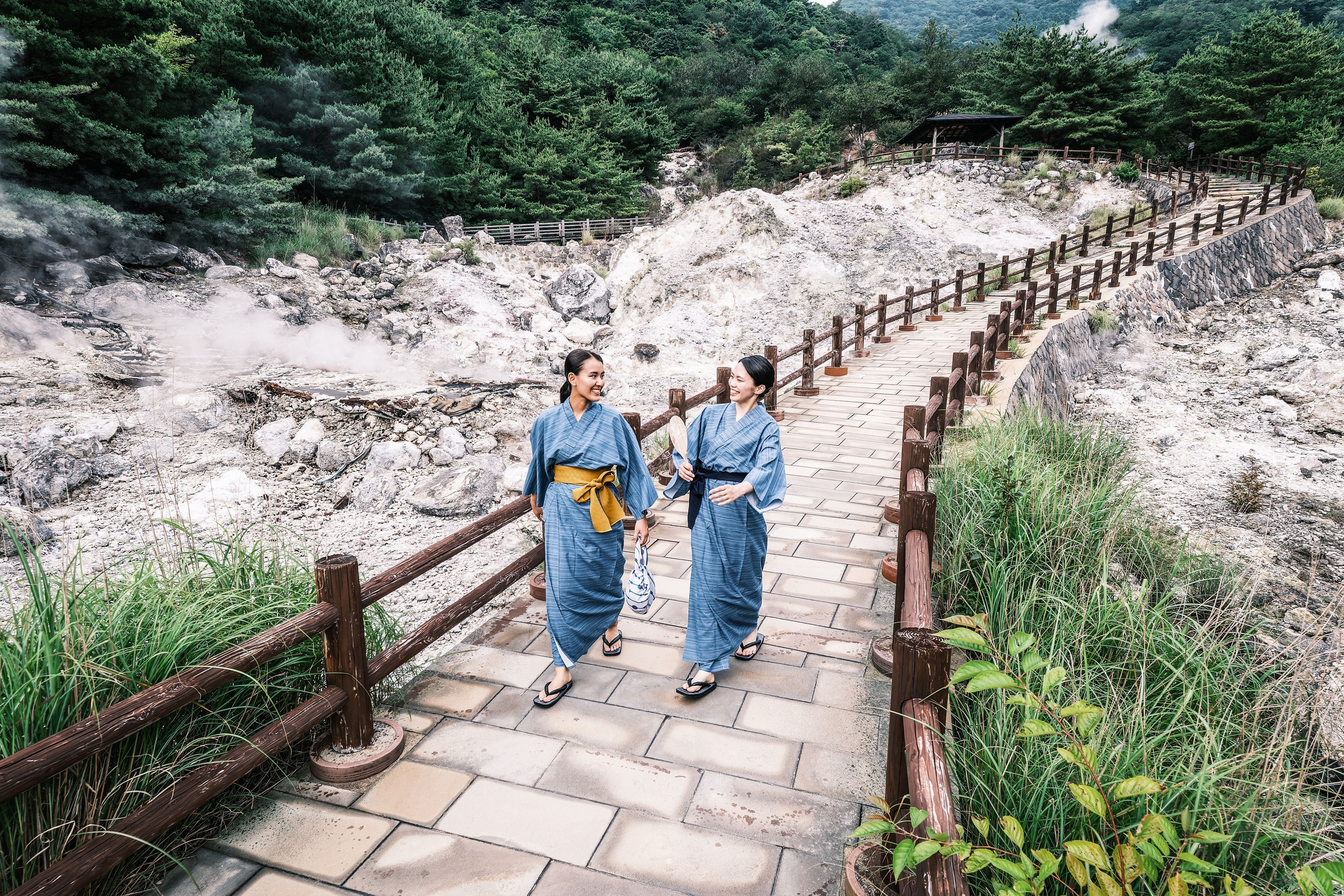
Another taste of the Sugar Road awaits at my final homestay an hour away in farmland outside the city of Minamishimabara. Here, I muck in with the multigenerational Matsuo family on their strawberry farm, learning about seedlings and soil management, before having a go at making Omura sushi. It takes several attempts with the wooden tool that shapes the pressed rice — grandma guiding my hand with one of hers, the other covering her mouth to guffaw more or less good-naturedly at my ineptitude. We top it with bits of scrambled egg and neon-pink dried fish roe, and the first bite is a revelation. The recipe, dating back 500 years, calls for the rice to be slightly sugared. It’s a winningly sweet-salty-umami combination that we eat at a family dinner alongside fried fish and a tempura of green pepper and aubergine, freshly picked from the garden.
Rui, the family’s youngest, turns nine the following day, so after eating there are fireworks to celebrate in the garden. We light sparklers with an usually fierce fizz — I squeak in surprise, and our grins are illuminated in their lemon sherbet glow. Life is sweet.
The journey by Shinkansen from Tokyo to Kyushu’s gateway city of Fukuoka takes five hours. Various local airlines fly several times daily, with a journey time of two hours.
Kyushu’s comprehensive rail network, which includes numerous sightseeing trains, is a great way to explore the island. For tickets and rail passes, visit the Kyushu Railway Company website.
Local buses crisscross many parts of Kyushu’s mountainous interior, and frequent ferries access islands and distant bays.
When to go
Japan’s southernmost island, Kyushu is one of the country’s warmest regions with hot, humid summers and dry winters. Temperatures range from winter lows of 10C in January in the colder north of the island to average summer highs of 32C in August in the warmer south. Typhoon season, between May and October, brings heavy rain and highs of 32C.
Where to stay
Oniwa Hasami homestay, in Higashisonogi, Nagasaki Province. From ¥19,062 (£105) a night half board for one group of up to seven people.
Adonoan homestay. From ¥4,500 (£24) per person a night, B&B.
Doubles at Kai Unzen from ¥62,000 (£115) a night, half board.
Minamishimabara City Tourism Authority matches guests with homestays in rural, farming and fishing communities, from ¥9,900 (£55) per person a night, half board, including activities.
Farmstay Miyuki-dori Goen in Ukiha, sleeps 10 in eight rooms, from ¥68,990 (£378) a night, B&B.
How to do it
Trailfinders offers bespoke trips to Japan, including the 17-day Honshu & Kyushu Encompassed, which takes in Fukuoka and Nagasaki, from £6,999 per person. The trip includes train travel, 15 nights’ hotel accommodation and a ryokan stay, with some meals, guided activities and international flights included.
To subscribe to National Geographic Traveller (UK) magazine click here. (Available in select countries only).
